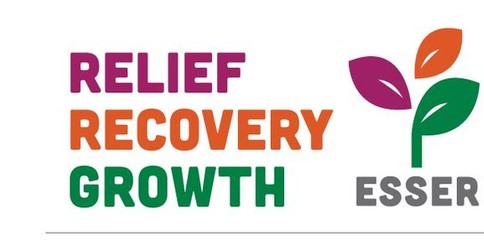
Nine Things You Should Know
Greetings as we say goodbye to 2022 and launch into 2023! The Oregon Department of Education (ODE) is grateful for everything districts do to ensure Oregon students are learning and thriving. Also, thank you for all of your attention to planning and implementation of the Elementary and Secondary School Emergency Relief III (ESSER III) Fund. Here are nine things you should know:

Thank you to all the districts, Educational Service Districts (ESD), and charter schools that attended the fall ESSER Office Hours regarding changes in federal reporting expectations. ODE examined responses to the Office Hour surveys and updated the ESSER Reimbursement Request Form and Capital Expenditure Approval Form to support district data collection in accordance with updated federal regulations. The updated forms require districts and ESDs to provide ODE with more detailed information regarding ESSER expenditures. To access the updated forms, please visit the ODE ESSER webpage. Districts are now required to use these updated forms. ODE will be providing additional support regarding how to complete the new reimbursement forms in the coming weeks. Please check the ODE ESSER webpage for updates.
ODE recognizes the increased burden districts will experience as a result of changes to the forms. While we did everything within our power to mitigate this burden, we appreciate your efforts in helping us to gather the additional information so that we will remain in compliance with the new federal reporting requirements. Please note that ODE will connect with each district that submitted ESSER expenditure reimbursement requests since July 1, 2022 to ensure we have the required reporting information.
If you have any questions or technical assistance needs regarding ESSER funds, please contact the ESSER inbox at ODE.ESSER@ode.oregon.gov
|
ESSER I has concluded and Oregon’s school districts invested $114,018,707 (100% of available funds) in supporting their students and community pandemic recovery efforts! This is a tremendous accomplishment, and ODE is grateful for all the hard work by districts to ensure the funds were used by the federal deadline. Please click on this link to learn more about how districts spent their ESSER funds.
This a gentle reminder that districts must obligate and expend their ESSER II funds by September 24, 2023 and their ESSER III funds by September 24, 2024. Please keep these deadlines in mind as you continue to work with your community to identify the best uses of your district’s remaining ESSER funds. The ODE ESSER team is available to answer any questions you have.
On December 7, 2022, the United States Department of Education disseminated updates to the Frequently Asked Question (FAQ) document regarding ESSER. Here are a few key takeaways from the updated FAQ:
- New information about carrying out services after the liquidation deadline (in other words, prepaying for services that are expected to occur in the future).
- Cautions pre-paying is generally not good stewardship.
- Flags the role of state and local procurement requirements.
- All activities must stop four years after the obligation deadline.
- Emphasizes that all activities must relate to preventing, preparing for, and responding to COVID, but also includes USED’s December 2021 clarification about the broad nature of the response to COVID as a new Appendix.
Districts are strongly encouraged to review the updated FAQ.
Exciting news! Thanks to your tremendous implementation ODE has been helping media fulfill requests for information included in your Integration Planning Tools (IPT). If the media has more detailed questions, we refer them to the districts themselves for responses.
 CTE Natural Resources-Forestry students from Springfield HS with equipment purchased with ESSER funds.
Career What do a commercial-grade stove, a flight simulator, and a wheel balancer have in common? They are all examples of investments districts are making in their CTE programs to increase student skills and knowledge as they prepare for life after high school. These investments also create opportunities for students who might be wavering in their high school journey to re-engage and return on a path to graduation.
“We need high school to be relevant, engaging, and someplace students want to be,” said Springfield School District High School Director Mindy LeRoux. Springfield School District provides more than 13 CTE pathways that offer more than 100 different classes for students. ESSER funds provide Springfield’s CTE program additional capacity to secure some of the large ticket items that anchor new opportunities, including midrise vehicle lifts for their expanded Automotive Technology (which now can include diesel engines) and a portable sawmill for the Natural Resources/Forestry program.
“The infusion of additional dollars allows us to think beyond day-to-day operations,” noted Tony Jones, Director of CTE, and Wayne Gallagher, Superintendent of Coquille School District. Coquille SD added a flight simulator and a truck driving simulator to existing heavy equipment simulators creating, “The most popular classroom in the school.”
Students who participate in CTE pathways have a much higher graduation rate in Oregon, 9. The engaging classes offer a primary source of elective coursework in many high schools and allow schools to match students with their interests. ESSER-funded equipment can “make an impact now for what we need, as well as providing an industry aligned-experience that will be great for students’ future,” said LeRoux.
ODE’s Career Connected Learning Team and statewide partners created the Career Journeys Toolkit for School, Classroom and Out-of-School Use. It’s a comprehensive guide adaptable for classrooms and learners across the state and features career development resources, engaging activities, lessons, and a Universal Lesson Plan to support substitutes in presenting this important information. Alongside the video series, this toolkit includes resources to enrich the Career Journeys experience through school-wide, in-class and Out-of-School activities.
We are excited to highlight one of the 12 projects Oregon has designated as an ESSER III Set-Aside Investment. Oregon’s full plan for the state’s allocation of ESSER III Set-Aside funds can be found here.

Care and Connection: Supporting Mental Health in Education Using ESSER III Funds
Oregon’s Care and Connection effort, part of ODE’s Strengthening Mental Health in Education (SMHiE) Initiative, offers many tips and resources for helping students, families, and staff navigate transitions successfully. Click here to read the full article.
|